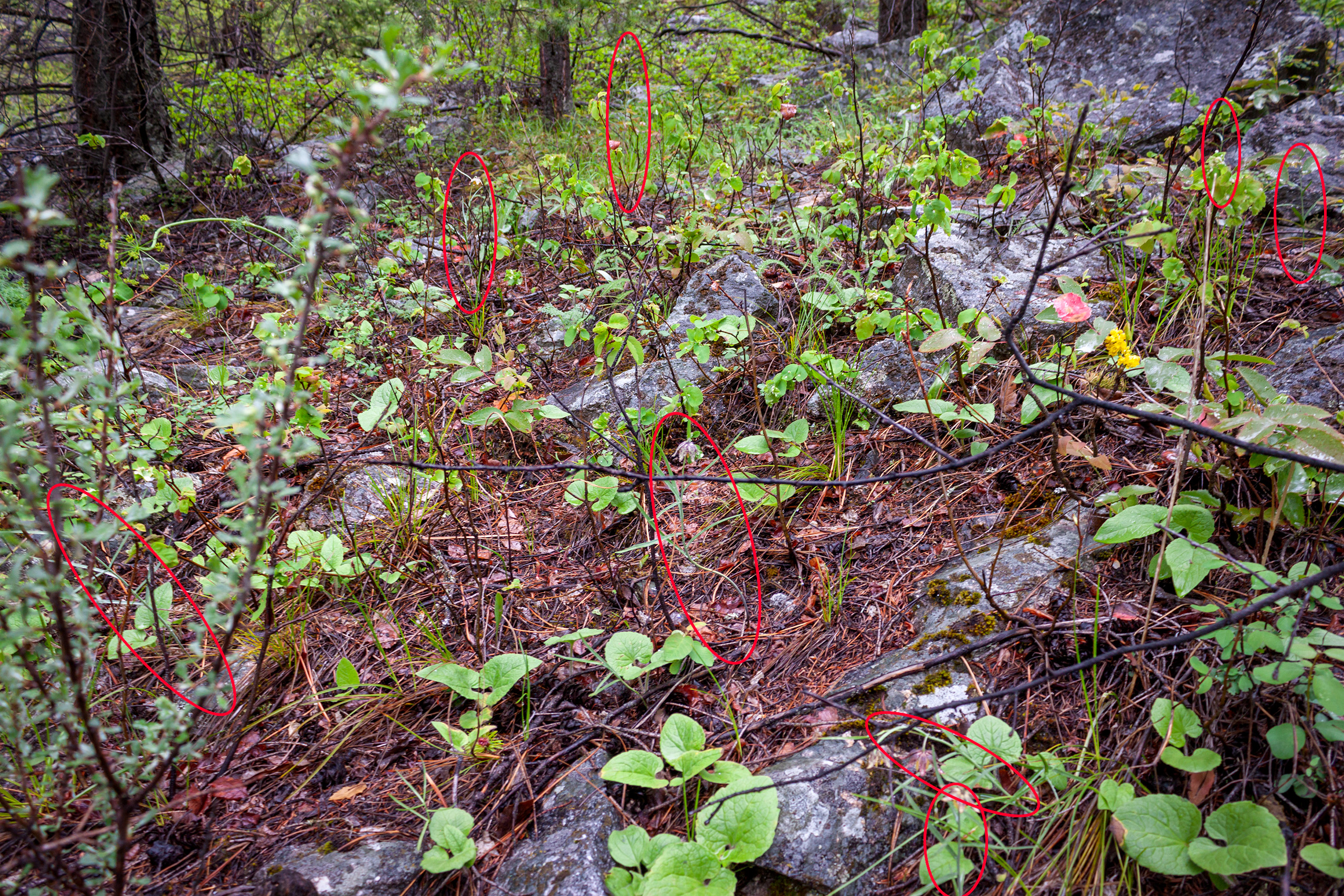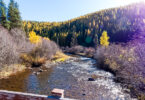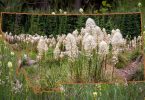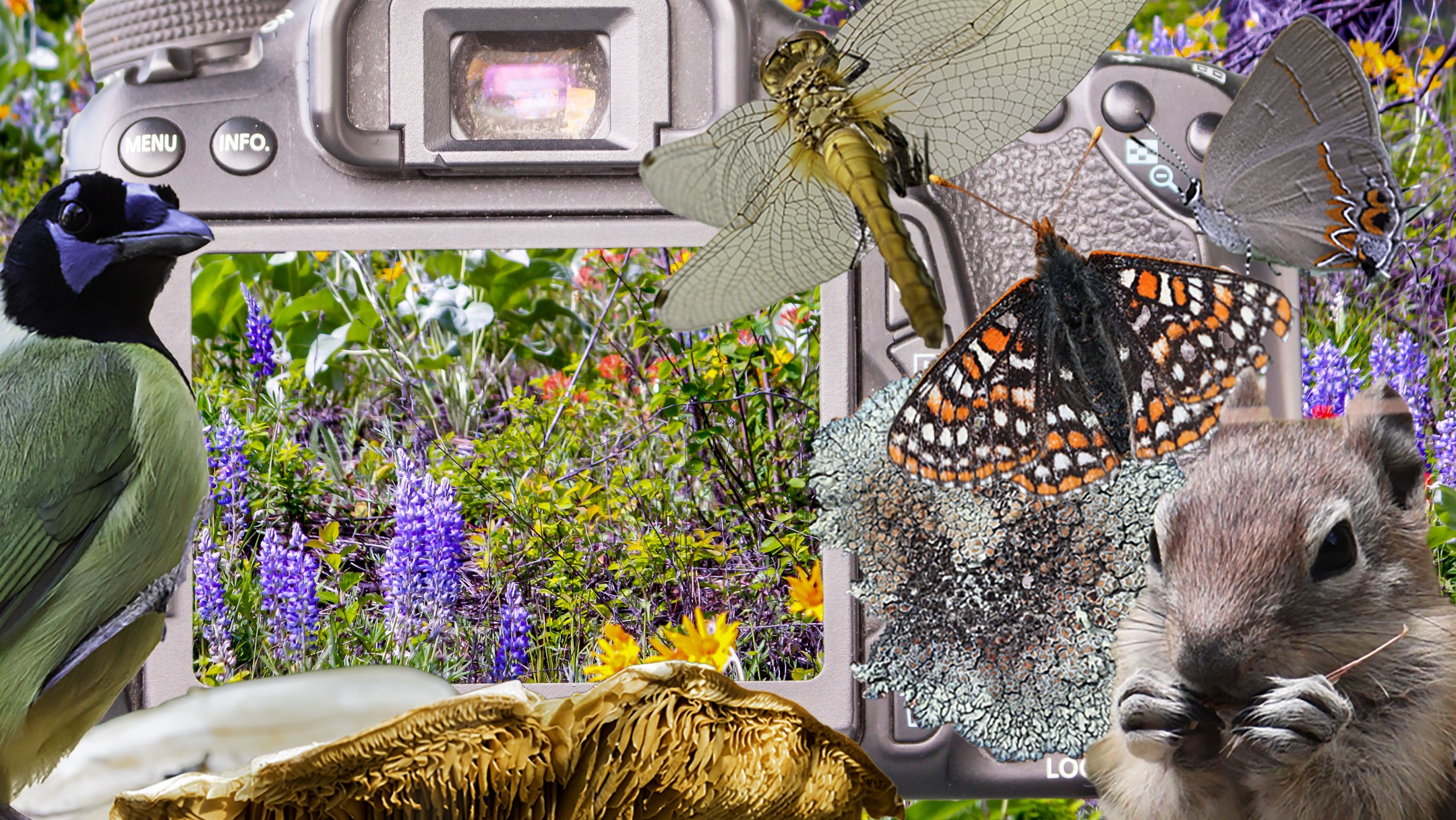
Finding Skills
Did you find any Chocolate Lily in the photo above (answer at bottom of this post)? The intent of this post is to improve your skills in doing so now and when you hike your favorite Montana trail. Photographs herein are meant to supplement printed manuals, field guides, books and keys in which near and far images of Chocolate Lily (Fritillaria atropurpurea) are lacking. Images are important not only for identification, but also to create a mental search image for usage in the field locating these plants. As the photo above illustrates they are difficult to pick out from surrounding vegetation.
Plant Descriptions
Abundance
This is one key factor in finding any plant or animal. Montana Field Guide explains this species status in Montana: “Sporadically distributed across the state. Often occurring as scattered individuals, though occasionally more locally abundant.” In west-central Montana Lackschewitz (1991) found it “uncommon in small colonies in meadows and open forests in the foothills of the Bitterroot Mountains at 1065-1645 m (3,500-5,400 ft).” Two regional views covering the wider Rocky Mountain region and Pacific Northwest respectively are: “Widespread but seldom abundant” (Denver Botanic Gardens 2018) and “Uncommon” (Turner and Gustafson 2006). Flora of North America agrees with the ‘widespread’ descriptor: “This species has the widest geographic distribution in the genus.”
Where to Look?
Where to look? In Montana, Lesica (2012) outlines the following habitats and elevations: “Grasslands, sagebrush steppe, badlands, drier open forests, thickets; plains, valleys, montane.” In the Pacific Northwest, Turner and Gustafson (2006) list: “sheltered edges of forests, near shrubs, at mid to high elevation” while Hitchcock and Cronquist (1973) catalog: “grassy slopes to conifer forest or rocky montane ridges” as places. For the Rocky Mountains, the Denver Botanic Gardens (2018) state: “among shrubs, in dryish forest openings, sage meadows or grasslands.” Flora of North America has the pithiest description: “leaf mold under trees and shrubs.”
When to Look?
Montana Field Guide has a bar chart illustrating May through August as the period for finding this plant. The most sightings are recorded during June and the least number in May. More broadly Turner and Gustafson (2006) qualify the time period as late spring-early summer for the Pacific Northwest. Similarly, Denver Botanic Gardens (2018) note spring-summer as bloom period.
Plant Form and Structure
- General impression size and shape: wiry, stiff, no branches, palm frond-like
- Height is between 4 and 25 inches.
- Leaves are 4 to 12 centimeters long and 2 to 10 millimeters wide (Lesica 2012). Turner and Gustafson (2006) describe shape as “narrow” while Denver Botanic Garden (2018) use the adjectives “linear to lanceolate”.
- Leaf arrangement starts about half-way up the stem. The lower part of the stem is leafless. Thereafter arrangement is alternate or in 1 to 2 loose whorls. Leaves are stiffly situated off vertical stem by about 25 degrees above horizontal.
- Leave number 2 to 4 / per whorl below the flowers and another 1 to 3 at upper stem nodes (Denver Botanic Gardens 2018). Lesica (2012) describes number as “numerous”.
- Leave color is undescribed in the literature. My personal description is grayish-white green, a diluted or unsaturated green. Holds true in sun or shade. Definitely different than surrounding vegetation which most would identify as green.
- Flowers number from 1 to 4 per plant. Each hangs downward on a flower stalk (pedicel).
- Flower tepals number six and are mottled purple, brown and yellow. Each tepal measures about a half inch in length.
- Stamens number six and are bright yellow in color and visible on well opened flowers. Shorter than tepal opening.
- Style is yellow and divided into three. The segments are rope-like and curl upwards.
Answer to Header Image

References
Brandenburg, D. M. (2010). Field Guide to Wildflowers of North America. New York,
New York: Andrew Stewart Publishing, Inc.
Denver Botanic Gardens. (2018). Wildflowers of the Rocky Mountain Region. Portland, Oregon: Timber Press.
Lackschewitz, K. (1991). Vascular Plants of West-Central Montana-Identification Guidebook. Ogden, Utah: USDA Intermountain Research Station.
Lesica, P. (2012). Manual of Montana Vascular Plants. Fort Worth, Texas: Botanical Research Institute of Texas.
Turner, M. & Gustafson, P. (2006). Wildflowers of the Pacific Northwest. Portland, Oregon: Timber Press.
























[…] Fritillaria […]